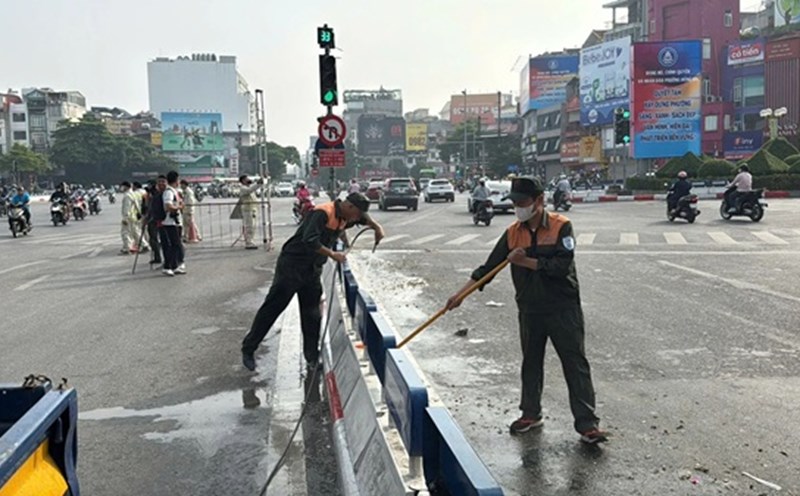Saturday Morning - Green - Clean - Beautiful is no longer a high-standing slogan, but has become a daily, simple but meaningful action.
That is an inspiring story from the event of "exchanging garbage for gifts" that Hoan Kiem ward organized last weekend.
Or the story of Green Life - an organization founded by a former University of Science and Technology student - organizing more than 450 events over the past 6 years, attracting more than 1 million participants and collecting 600 tons of recyclable waste. That number not only reflects the amount of waste that is properly treated, but also shows the strength of the community when awakened properly.
Giving garbage to the garbage truck to collect and throw everything into one bins - that was a natural habit of many Hanoians. But now, in the context of the city being under huge pressure from nearly 7,000 tons of domestic waste per day, waste can be a resource, and can also be a source of heavy pollution, depending on how each person classifies and processes it.
In reality, classifying waste at source - although it has been discussed for many years - has not yet become a popular habit in the community. The reason is partly due to the lack of clear instructions, partly because of the mentality of "it's the same thing if you do something others don't do".
If traffic shows civilization on the streets, the way people treat waste shows civilization right in the kitchen of each family. In developed countries, waste classification has become a deep eating habit, even a part of the educational curriculum from primary school.
Hanoi is also going in the same direction. But the difference is that to change a behavior that has existed for decades, one cannot rely solely on the law or the campaign at one time. There needs to be real participation of the people - not for rewards or movements, but for self-awareness and sense of responsibility.
Waste classification does not require people to do big things. Just separating organic waste, plastic bottles, paper, batteries, and electronic devices - each item is thrown in the right place - has helped reduce the final treatment load. Each citizen properly classifying waste is contributing to reducing environmental toxicity, saving resources and protecting public health.
We often expect a clean, beautiful city, less garbage, no pollution. But the city cannot clean up itself if people still have the mentality of "having environmental workers moving".
To build a truly green - clean - beautiful Hanoi, there is no need for mass campaigns, but there needs to be silent but persistent changes from each citizen. Each trash bag is properly classified, each time the trash is brought in exchange for a pot of plant... are the first green shoots for a sustainable development city.











